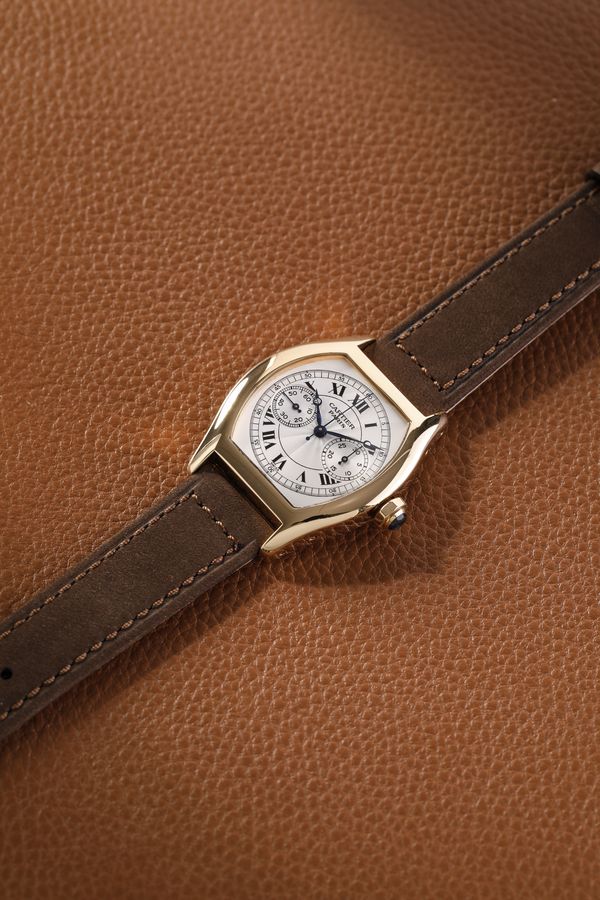- By Tiffany To
While the single button chronograph with tonneau-shaped case from the Cartier Privée Paris Collection is one of the manufacture’s most sought-after modern timepieces on the market, less is known about the model that inspired the icon we know very well today. This season, Phillips in Association with Bacs & Russo has been entrusted with the sale of the original and CPCP version of the Cartier single button chronograph wristwatch, representing an incredibly rare opportunity to acquire both examples.

To put things into context, the tonneau-shaped "tortue à pattes" or "turtle on legs" model was first designed 1912 by Louis Cartier. The model then evolved to housing a single button chronograph movement in the 1920s, and was made very rarely throughout history. This design allowed the wearer to operate all start stop and reset functions through the crown. To date, only a handful are known still in their original and unrestored condition. The timepiece was later revisited in 1998, when Cartier re-released the timepiece as part of the Collection Privée Cartier Paris collection, and gradually released models throughout the next 10 years, taking inspiration from its archives.

It is by understanding and contextualizing the past that we can really appreciate the re-creation of today, and the presence of both timepieces in the Geneva Watch Auction XIII provides an opportune moment for scholars and collectors to view both examples up close and understand the details that define each incredibly collectible timepiece.
Dial
At first glance, the dials may seem similar. Both display Roman indexes, as well as a “Chemin de Fer” on the dial. Yet, a closer inspection reveals two different techniques. While the original dial displays a grené finish, the modern version has a guilloché finish with lacquer on top. The art of guillochage has been around since the 16th century – Cartier’s decision to use it gives a nod to its history and savoir-faire, and is also aesthetically in-line with the models that were also released in the CPCP collection. We also see the addition of the “secret” signature at 7 o’clock.
Case
The case size of the CPCP version decidedly marks it as a 21st century timepiece. Measuring 34mm by 43mm, it commands much more presence on the wrist than its predecessor, which measures 26mm by 35mm. The dimensions are also slightly different – the modern version has a thicker and larger bezel with the new Cartier cabochon crown slightly more protruded. A particularly nice touch is the placement of the screws on the case – they are virtually identical to those of its predecessor, showing how faithful Cartier was in this recreation.
The casebacks also show how horology has evolved over time. The vintage version displays a sold case back, with Cartier hand-stamped numbers – typical of timepieces from that period, as well as French hallmarks. In the modern version, the movement is displayed through a sapphire case back, and modern gold hallmarks are used.
Movement
The movement of the modern CPCP monopusher was co-developed by Vianney Halter, Denis Flageollet, and Francois-Paul Journe through their firm at the time, Techniques Horlogères Appliquées (THA) – an in-depth interview with Denis Flageollet can be found here. In fact, it was THA that gave Cartier the idea to re-make the Cartier monopusher chronograph, based on the very vintage model we see here.
In comparison, the present vintage monopusher chronograph wristwatch was made in the 1920s, with a movement by European Watch & Clock Co. Inc., a joint venture between Cartier and Edmond Jaeger of Jaeger-LeCoultre. At the time, all components were hand finished which gives it a very artisanal appearance.
Between the two, it is difficult to say which is more appealing – while one is discreet, elegant and historically important, the other is incredibly modern and a part of many independent watchmakers’ history. With both examples being so good in so many diverse ways, the only natural and logical conclusion is for the asuste collector to acquire both at the same time 😊








